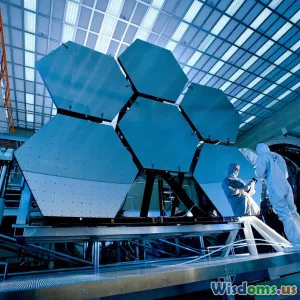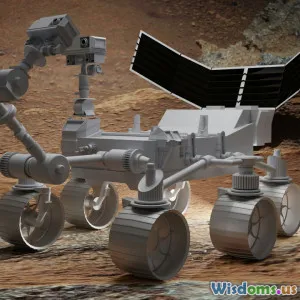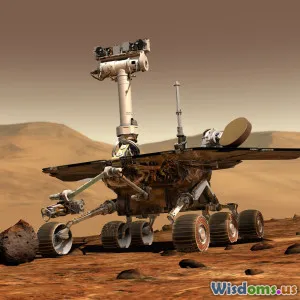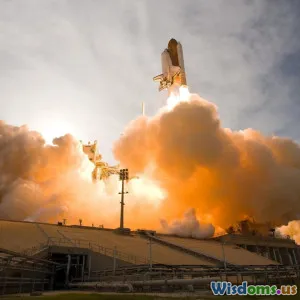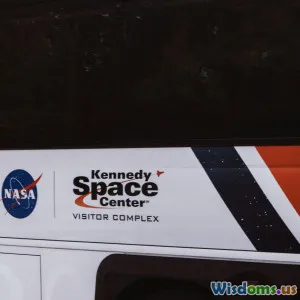
How NASA Plans Human Mars Landings by 2035
11 min read Explore NASA's bold roadmap for human Mars landings by 2035, revealing the science, technology, and strategy behind this historic mission. (0 Reviews)
How NASA Plans Human Mars Landings by 2035
Introduction
Imagine standing on the rusty plains of Mars, gazing back at the faint blue dot that is Earth. This horizon-breaking image isn’t just science fiction anymore—it’s a bold vision steadily turning into reality. NASA has set its sights on landing humans on Mars by 2035, a goal that embodies decades of scientific innovation, resilience, and international partnership. But how exactly does NASA plan to surmount the monumental challenges posed by a crewed mission to the Red Planet within this tight timeline? This article will unravel NASA’s multifaceted approach, from spacecraft design to astronaut health, infrastructure development, and collaborative frameworks, giving you an insightful view into one of humanity’s most ambitious quests yet.
The Vision: Why Mars and Why 2035?
Mars represents the next giant leap facing humankind in space exploration. Unlike the Moon, Mars offers a rich scientific landscape: its geology, atmosphere, and potential for past or present life hold answers to profound questions about our place in the universe. Moreover, establishing human presence on the Red Planet is a stepping stone towards deeper space exploration, such as crewed missions to the outer planets or asteroids.
The timeline targeting 2035 carefully balances technological readiness with strategic planning. This deadline reflects NASA’s prioritization of building on the Artemis program, which aims to return humans to the Moon by the mid-2020s, and establishing a sustainable lunar presence. The Moon acts both as a testbed and a proving ground for Mars technologies and mission operations.
"Mars is the proving ground for just how far we can push our boundaries as a species," says Dr. Sarah Johnson, NASA’s Mars mission lead. "2035 may sound distant, but with current advancements, it's well within reach."
Core Components of NASA’s Mars Plan
1. Developing Advanced Spacecraft and Propulsion
A Mars mission demands spacecraft capable of traveling 140 million miles through deep space reliably. NASA’s current vehicle backbone is the Space Launch System (SLS), a mega rocket designed to transport heavy payloads beyond Earth's orbit.
In conjunction with the SLS, NASA is developing the Orion spacecraft, which will ferry astronauts safely between Earth and Mars transit habitats. While Orion offers a foundational crew module, further innovations are crucial for longer Mars missions.
Nuclear Thermal Propulsion (NTP) is a significant focus area to shorten transit time. Traditional chemical rockets would take approximately six to nine months, while NTP-powered spacecraft could cut transit to around three to four months, dramatically reducing astronaut exposure to cosmic radiation.
Example: The Kilopower project, a NASA initiative for compact nuclear reactors, supports this propulsion push and promises reliable onboard power for deep space journeys.
2. Establishing Deep Space Habitats and Transit Stations
Extended Mars missions require more than transit; astronauts need safe, sustainable habitats for months at a time. NASA is conceptualizing Deep Space Gateway (DSG)—an orbiting lunar station that will serve as a staging ground for Mars missions, and a testbed for life support and equipment in deep space.
Moreover, NASA’s evolving life support systems focus on closed-loop designs that recycle water and oxygen with high efficiency. For instance, the Mars Oxygen In-Situ Resource Utilization Experiment (MOXIE)—operating on the Perseverance rover—successfully extracts oxygen from Martian CO2 atmosphere, hinting at future habitat sustainability.
3. Surface Infrastructure and Resource Utilization
Landing humans safely requires not only entry, descent, and landing (EDL) technologies but also immediate support infrastructure for survival and exploration.
NASA aims to leverage In-Situ Resource Utilization (ISRU) on Mars—extracting water from ice deposits or regolith, and synthesizing fuel locally. This reduces launch mass and costs dramatically by minimizing supplies shipped from Earth.
Robotics will precede crew landings to build habitats, power systems, and communications infrastructure. For example, NASA’s investments in autonomous rovers for construction will enable a semi-autonomous build of initial shelters before astronauts arrive.
4. Addressing Astronaut Health and Safety
Mars missions pose unprecedented health risks due to radiation, microgravity effects, and psychological challenges arising from isolation and delay in communications.
Research on the International Space Station (ISS) feeds critical data on bone density loss, muscle atrophy, and radiation shielding. NASA plans enhanced shielding materials and pharmacological countermeasures to protect astronauts during Mars transit and surface stay.
Psychological support strategies include virtual reality engagement, real-time Earth contact through advanced communication systems, and cohesive crew selection criteria emphasizing mental resilience.
5. Mission Architecture and International Partnerships
NASA’s Mars mission framework embraces a flexible architecture with modular launches and rendezvous points, making the mission adaptable and robust.
International agencies like ESA (European Space Agency), JAXA (Japan Aerospace Exploration Agency), and private partners (SpaceX, Blue Origin) are critical collaborators. Shared technological expertise, resource contributions, and shared risks accelerate progress.
SpaceX’s Starship, for instance, has demonstrated potential heavy-lift and in-orbit refueling capabilities, synergizing with NASA's lunar Gateway and Mars transit ambitions.
Research, Testing, and Pathfinding Missions
Artemis Program as a Stepping Stone
The Artemis program establishes a sustainable human presence on and around the Moon by the late 2020s. Artemis not only tests human endurance in space but also validates technical systems such as life support, habitats, and surface mobility in a relevant environment.
Mars Sample Return Missions
Collecting and returning Martian soil and rock samples with robotic probes is critical to preparing for human landings. Understanding hazards, geology, and potential bio-signatures informs planning of surface operations and safety protocols.
Long-Duration Analog Missions
Simulated Mars missions on Earth, such as the Mars Desert Research Station (MDRS) and NASA's Human Exploration Research Analog (HERA), test isolation effects and team dynamics, mirroring mental and physical stresses expected on Mars.
Challenges and Innovative Solutions
Challenge: Entry, Descent, and Landing (EDL)
Mars’ thin atmosphere challenges spacecraft deceleration. New technologies, like deployable supersonic decelerators and precision landing using terrain-relative navigation, are under active development. NASA’s Mars 2020 Perseverance landing deployed such advanced techniques successfully.
Challenge: Communications Delay
Mars can be up to 20 light minutes away, making real-time communication impossible. NASA is investing in autonomous operation systems and artificial intelligence to support decision-making onboard without waiting for Earth-based inputs.
Challenge: Cost and Sustainability
Mars missions are expensive, projected in the tens of billions of dollars. Efforts focus on cost-sharing with international partners and private companies, optimizing launch schedules, and developing reusable spacecraft components to reduce rebuilding costs.
Inspiring the Next Generation
NASA’s Mars plans also serve to inspire a new wave of scientists, engineers, and enthusiasts worldwide. Educational initiatives, outreach programs, and involvement with academia encourage youth engagement and innovation.
Programs like NASA’s Student Challenge activities and partnerships with universities catalyze solutions for robotic autonomy, habitat design, and space medicine, fostering a vibrant ecosystem supporting Mars exploration.
Conclusion
The prospect of human Mars landings by 2035 is no longer a distant dream but an emerging reality meticulously crafted through scalable technologies, international collaboration, and scientific ambition. NASA's strategy hinges on integrating lunar experiences, harnessing innovative propulsion, ensuring astronaut safety, and leveraging in-situ resources.
While challenges remain daunting, the progress witnessed—from successful Mars rovers to nuclear propulsion testbeds—imbues confidence that by 2035, human footsteps will indeed mark Martian soil. This journey promises profound scientific discoveries and marks a pivotal chapter in human exploration, inspiring generations to look beyond the sky and realize the boundless possibilities of the cosmos.
"To reach for Mars is to reach into humanity’s future," concludes Dr. Johnson. "With every new technological breakthrough and collaboration, we move closer to defining that future."
As individuals fascinated by space or contributors to science and technology sectors, staying informed and supportive of such efforts equips us to engage with this exciting frontier—not merely as bystanders but as active participants in humanity’s greatest adventure yet.
References
- NASA Mars Exploration Program: https://mars.nasa.gov
- Artemis Program Overview: https://www.nasa.gov/specials/artemis-1/
- MOXIE Experiment Details: https://mars.nasa.gov/mars2020/spacecraft/instruments/moxie/
- Kilopower Nuclear Reactor: https://www.nasa.gov/mission_pages/smallsats/kilopower.html
- Mars Desert Research Station: http://mdrs.marssociety.org
- SpaceX Starship: https://www.spacex.com/vehicles/starship/
Rate the Post
User Reviews
Popular Posts










